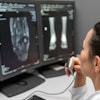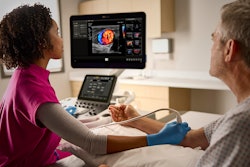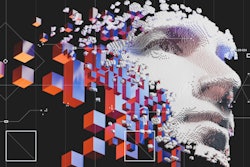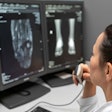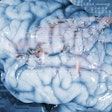How accurate are AI-generated explanations of radiologists' roles in patient-directed media? Not as much as they should be, according to a research article published in the Canadian Association of Radiologists Journal.
The misrepresentation can cause confusion among patients, wrote a team led by Yousif Al-Naser, MD, of Trillium Health Partners in Mississauga, Ontario, Canada. The article was published June 24.
"Generative AI frequently misrepresents radiologist roles and demographics, reinforcing stereotypes and public confusion," the group noted.
Generative AI tools such as text-to-image and video models are being used more and more to introduce patients to healthcare scenarios, "offering new opportunities for education and public health messaging," the team wrote. But these technologies also "raise concerns about bias and representation," and "studies have shown that AI systems can reinforce existing biases related to gender, ethnicity, and professional roles, potentially undermining equity and inclusion in clinical environments."
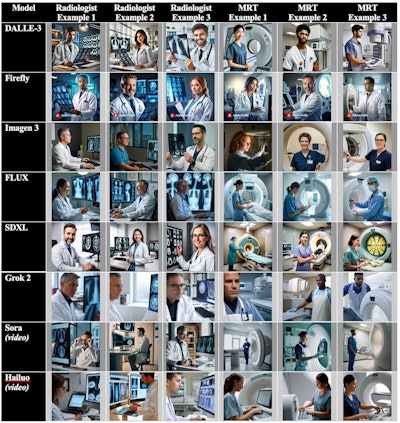 Image courtesy of the Canadian Association of Radiologists Journal.The article [and image] is distributed under the terms of the Creative Commons Attribution 4.0 License https://creativecommons.org/licenses/by/4.0/) which permits any use, reproduction and distribution of the work without further permission provided the original work is attributed as specified on the SAGE and Open Access pages (https://us.sagepub.com/en-us/nam/open-access-at-sage).
Image courtesy of the Canadian Association of Radiologists Journal.The article [and image] is distributed under the terms of the Creative Commons Attribution 4.0 License https://creativecommons.org/licenses/by/4.0/) which permits any use, reproduction and distribution of the work without further permission provided the original work is attributed as specified on the SAGE and Open Access pages (https://us.sagepub.com/en-us/nam/open-access-at-sage).
This problem can be particularly sticky when it comes to differentiating between radiologists and technologists, according to the team. Patients can be confused about these two types of providers; in fact, the researchers cited a 2021 study that found that half of patients believed that radiologists perform the scanning.
"Misunderstandings about who performs and who interprets imaging studies can lead to misdirected questions, unrealistic expectations, and diminished recognition of radiologists' diagnostic expertise," they explained. "One of the most common misconceptions portrays radiologists as solitary individuals, confined to dark rooms, isolated from both their colleagues and patients, with no direct patient interaction. This outdated image overlooks the evolving and dynamic nature of radiology today, where radiologists play a crucial, collaborative role in patient care and routinely engage directly with both patients and multidisciplinary medical teams."
The group conducted a study that explored whether misconceptions about radiologists and technologists persist in patient-facing material created by AI. The study included 1,380 images and videos generated by eight text-to-image/video AI models (DALLE-3, Imagen-3, Firefly, Grok-2, SDXL, FLUX, Hailuo, and SORA). Five raters assessed the following factors:
- Role-specific task accuracy (that is, for radiologists, interpreting images, diagnostic reporting, or performing interventional procedures, while for technologists, operating the imaging equipment, positioning patients for the exam, and preparing exam rooms),
- The appropriateness of radiologists' and technologists' attire,
- The presence of imaging equipment,
- The lighting environment,
- Diversity in radiologists/technologists' demographic variables such as gender, race/ethnicity, and age, and
- The presence of a stethoscope, which neither radiologists nor technologists use.
After reviewing the videos, the team found that technologists were depicted accurately in 82%, but only 56.2% of radiologist images/videos were role-appropriate. It also noted that among inaccurate radiologist depictions, 79.1% misrepresented medical radiation technologists' tasks and that the radiologists portrayed in the videos were more often male (73.8%) and white (79.7%), while technologist portrayals were more diverse. Finally, the readers reported that the appearance of stethoscopes (45.4% for radiologists and 19.7% for technologists) and portrayal of radiologists in business attire rather than health professional attire further indicated bias.
The fact that technologists were portrayed wearing scrubs "fuels a broader stereotype that separates 'those who do' from 'those who decide,' positioning MRTs as technical workers without acknowledging the depth of their clinical knowledge and critical role in ensuring high quality patient care," the team wrote, while "depicting radiologists predominantly as older White men in business attire [and in] isolated in dimly lit spaces could perpetuate stereotypes that the specialty lacks diversity and interpersonal contact."
Why does any of this matter? Because "representation directly influences career aspirations, patient trust, and workforce diversity," according to the authors, who urged "balanced portrayals … [that support] broader efforts to embed health equity metrics into AI evaluation."
The complete study can be found here.


